August 27, 2020 – Volume 22, Issue 4
In This Issue
- Flanigan’s EcoLogic: Gardening in the Pandemic
- CCAs’ World-Class Program Designs
- The Duck Curve in Focus
- California’s Microgrids and Wildfires
- Battery-Ready Homes
- Black Wind Turbine Blades
- Hydrogen Fuel Cell Power Plant
- French and German EV Sales

Flanigan’s EcoLogic: Gardening in the Pandemic
In the midst of a pandemic, it seems that there is no better time to focus on new and healthy practices, or revisit old ones, that develop commitments that better ourselves and our environment. During this time of instability and uncertainty, we’re living an existence that is far from the norm, so we’re holding on to things that bring us comfort, safety, stability, and self-reliance.
There have been surges around the world in activities that are sustainable: Biking, baking our own bread, and home gardening… pedaling, rising, and blooming around the world. People seem to be coping with isolation by going back to the land, replacing human contact with nature. In cases, traditionally mown lawns are being replaced with urban gardens, often with raised beds. All you need is a little sun, water, and a positive attitude!

The International Association of Horticultural Producers is a group formed in Zurich, after World War 2, with the mission to kindle and maintain an enduring relationship with plants. It has released a fact sheet on the benefits of gardening in the pandemic. It’s about connecting; it’s about something bigger than the amount of food grown. Another writer nailed it: “But let’s be honest, you’re not going to be able to feed your family from a backyard vegetable patch. So why do we love to grub around in the dirt so much?”

There is something enticing about it. Fruit and vegetable seed sales are booming in this current climate. Seed suppliers were expected to be completely wiped out early on during lockdown. Instead, their sales are like never before. While many realize that gardening won’t sustain a whole family–it is a great supplementary activity. Some are even seeking advice on extracting seeds from produce bought in grocery stores when they can’t buy the seeds at garden centers.

With so many people digging into gardens for the first time — whether they are located in yards, kitchen windowsills, balconies, or even trash bags to grow potatoes — gardening networks are rapidly expanding to discuss and learn best practices. It has become a creative outlet for many of us. It has created a sense of community around something that is tangible–contact with something real that we can control with nurture.
Scotts MiracleGro has just released a study of gardening and lawn care during the pandemic. Fully, 55% of American adults are engaged in gardening or caring for their lawns. Why? Their primary reasons: a) keeping busy (54%), b) a sense of accomplishment (49%), c) to reduce stress (48%), and d) access to fresh food (33%). Those that are working outdoors do so for an average of two hours per day; half of the respondents stated that this is more than usual.
Planting the seeds, watering, and watching vegetables and fruits grow brings us back to our roots. There’s something special about the harvest. Getting back to the earth through gardening is especially therapeutic during uncertain times. Considering that most of us have experienced a shift in our daily routines, home gardening can help make this adjustment smoother and healthier.
Quote of the Week
“The market is ready and willing to pay [for resilience]….We have had huge demand for this.”
CCAs’ World-Class Program Designs
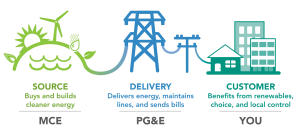
Image Courtesy of Marin Clean Energy
Marin Clean Energy, the first Community Choice Aggregator (CCA) in California, is celebrating its tenth year. MCE serves more than million customers in Contra Costa, Marin, Napa, and Solano counties. While CCAs originated in Massachusetts, there are now 21 CCAs in the Golden State. Enabled by State law, they are purchasing entities that focus on providing green power to utility customers. The Los Angeles-based Clean Power Alliance is the largest CCA in the nation, with revenues of $750 million. Clearly CCAs have come of age.
A webinar produced by Sonoma Clean Power, the CCA in Sonoma County, was most informative. I thank Sonoma Clean Power and its sponsors led by our colleagues at Terra Verde Energy. Six thousand of Sonoma Clean Energy’s customers lost their homes in wildfires. Many more lost power. Addressing energy resilience is now part of the CCA mission. What struck me is that CCAs are taking on the world. So far, so good.
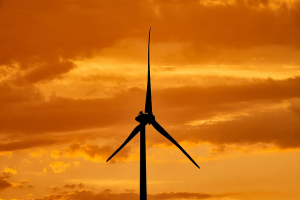
No longer are CCAs simply commodity providers. Now, their green products can be locally grown or combined with batteries for energy resilience. The Clean Power Alliance in Southern California is in the midst of a tender for 32 resiliency projects, one in each of its member jurisdictions. CCAs are targeting disadvantaged communities and providing them with energy equity in the form of resilience. Imagine a cooling center where customers without air conditioning can go in extreme weather conditions.
So, the mission moves from clean power sooner and cheaper, to clean power sooner and cheaper with select energy resilience. To that, we add a discussion about labor: The CCAs have a broad mission to provide societal benefit, social equity and fair labor. Those laborers that install energy efficiency measures and renewable energy installations are generally non-union, earning $20 per hour. The CCAs recognize the importance that they play in supporting the transition to a fair and just energy future. Twenty dollars an hour is not going to cut if for an oil or gas worker, now laid off, who had earned $60 per hour. So, on top of sooner and cheaper with select resilience is now distributed energy resources built by organized labor. How long will CCAs competitive advantage last?
Jamie Tuckey is the Director of Strategic Initiatives at MCE. Driven by the Public Safety Power Shutoffs (PSPS), which last year affected 260,000 MCE accounts. Of these, 70,000 were without power more than once and in some instances for several days, MCE was inspired to take action. Staff didn’t like the diesel generators that its customers were buying, and that it was buying for customers most in need of medical support. Yes, generators provide resilience, but they pollute and exacerbate the root cause of the fires in the first place. Thus, MCE sought means to promote customer-sited, fossil-free storage to boost consumer resiliency. It also sought the capability to shift loads off peak, finding value for both customer and the utility.
In 2019, MCE issued a Request for Proposals to develop a program to increase consumer energy resilience. A roster of 18 vendors submitted proposals; TRC Engineering was selected to develop the program in which ~$20,000 battery systems are being provided at deep discounts, and in cases for free. MCE arranges for California’s SGIP incentives, for Marin County Foundation grants for projects in disadvantaged communities, and the customers buy the systems that MCE controls. Then, they get $10 – 200 in monthly bill savings and resilience in the event of an outage. All systems are paired with existing or planned solar.
The MCE systems are designed for three “use cases:” daily load management, PSPS events, and grid outages. The MCE program provides bill savings, resilience, and lower emissions. Its first 15 MWh phase has now been increased to 70 MWh, given consumer interest. Later, MCE aims to aggregate its distributed storage capacity for sale, when feasible, to the California Independent System Operator (CAISO).
Slightly to the south, an innovative distributed Resource Adequacy program is now being run by five CCAs around the Bay Area. Distributed energy storage resources are being intelligently aggregated to build a virtual power plant, in this case to provide RA or Resource Adequacy … an ISO requirement of “load serving entities” to have adequate reserve margins. Innovative programs – thanks to energy storage – are providing new forms of values for consumers, as well as the CCAs from whom they buy green power.
The Duck Curve in Focus
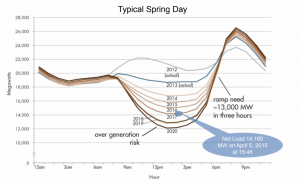
Years ago, utilities load profiles on a hot day looked like a mountain. In the early morning, there is little power use, but as students and workers get to work, and things heat up… power use rises like a mountain. Typically, power consumption peaks in early to mid-afternoon, then tapers off as commerce ends for the day, and the load profile experiences a small evening peak when everyone’s at home with family. The typical load profile has broad shoulders that define the utility’s baseload demand, traditionally fulfilled with thermal power plants that run 24/7.
Now, things have changed: There is still a mountainous amount of power used on a hot summer day, but net of solar and wind, the mountain on many days becomes a volcano. As more and more midday solar and wind come online, the crater deepens.
On some days, there is so much renewable capacity online that baseload power plants are useless. This is when the belly of the duck dips low, as shown in the Duck Curve above. Traditionally, most of the base of the mountain has been powered with baseload power plants, coal and nuclear. With solar and wind generation on certain days when renewable generation is high and demand is low, the result is excess power on the grid as the baseload plants can’t be modulated fast enough. This is a problem that needs to be addressed. Energy storage, however, provides a means to capture “excess” generation and to use it later. Clearly, we need a lot of storage in this massive transformation.
One of the great challenges that grid operators face in meeting this new load profile is that as the sun goes down, the power system needs a lot of power–and fast. Utility grids have to quickly “ramp up” to meet the system demand after the sun goes down. This quick surge in power demand – now without solar – forms the throat and neck of the infamous duck. This ramp speed is essential, the number of MW required every minute to fulfill the load. Here a huge benefit of storage: Batteries can be discharged in a matter of nanoseconds to meet this fast ramp in demand.
Not surprisingly, utility system planners are concerned about the Duck Curve. It varies, and its intensity is exacerbated by weather and the demand for power. Traditional planners want reliable power sources, like combined cycle gas turbines. Others celebrate the success of solar and wind. The Duck Curve is a welcome reality. We welcome the new era of big-time energy storage to ramp up and down quickly to follow the curve.
California’s Microgrids and Wildfires
This fire season has already been hell in California… and Microgrid Knowledge reports that a number of microgrids are performing well, delivering savings to the grid in its time of great need.
There are some 625 active fires in California at the time of this writing. The 2020 fire season – some 7,000 fires thus far — has already burned 1.4 million acres. That compares to 7,860 fires and 259,823 acres burned in 2019. Alarming to scientists is the number of fires, the length of fire season, their scale, and that they are pressing into ecosystems normally not susceptible. Fires typically ravage grasslands and chaparral, but now they are burning in every ecosystem including Joshua Trees and the revered California Redwood.
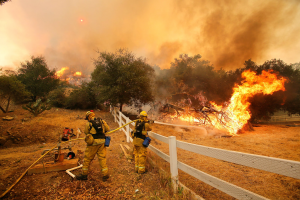 Fires are highly damaging to power system reliability. So, coupled with California’s August heat wave, now microgrids are proving their value with energy resilience. Several EPIC-funded microgrids performed as planned during California’s recent heat, punctuated by 11,000 lightening bolts in 72 hours, including Stone Edge Farm in Sonoma County, and the Blue Lake Rancheria in Humboldt County. The latter owns two microgrids, and voluntarily moved both into island mode during peak hours last week, taking pressure off the grid. Bloom Energy has more than 30 microgrids in California, providing more than 250 MW of power, playing an important role in relieving stress on the grid. Working with utilities and the California Independent System Operator, the U.S. Navy and Marine Corps disconnected 22 ships from shore power and transitioned a submarine base to back-up generators, activating several microgrids, resulting in 23.5 MW load reduction.
Fires are highly damaging to power system reliability. So, coupled with California’s August heat wave, now microgrids are proving their value with energy resilience. Several EPIC-funded microgrids performed as planned during California’s recent heat, punctuated by 11,000 lightening bolts in 72 hours, including Stone Edge Farm in Sonoma County, and the Blue Lake Rancheria in Humboldt County. The latter owns two microgrids, and voluntarily moved both into island mode during peak hours last week, taking pressure off the grid. Bloom Energy has more than 30 microgrids in California, providing more than 250 MW of power, playing an important role in relieving stress on the grid. Working with utilities and the California Independent System Operator, the U.S. Navy and Marine Corps disconnected 22 ships from shore power and transitioned a submarine base to back-up generators, activating several microgrids, resulting in 23.5 MW load reduction.
A residential project called OhmConnect, headed up by our colleague Cisco Devries, sent 220 MWh of power into the grid when called upon to do so on August 15. It paid its member $300,000 that day for its share of the incentives earned. OhmConnect operates a network of microgrids that include controllable smart water heaters and smart thermostats. They provided power by islanding their microgrids. One customer who has seven panels and two Tesla Power Walls didn’t even notice the system event, and earned $200 that day for “giving up” his unneeded capacity.
Battery-Ready Homes
Twenty years ago “radicals” like Don Osborn floated the idea of solar-ready homes. Even if the government couldn’t require homeowners to install solar – it was far too costly then – you could require that homes be solar ready. This made sense and was instituted in many jurisdictions in different ways, requiring homeowners and developers to plan a roof area for solar panels to provide a conduit pathway from the array to meter, etc. The point of such mandates was to provide electrical and physical capabilities to make future solar installation easier.
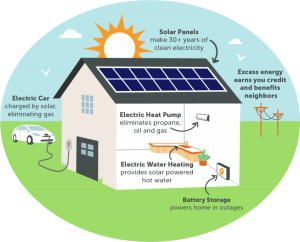
Image Courtesy of Revision Energ
Now we enter an era of “Battery-Ready homes” as well as “EV-Ready homes,” and perhaps “Home-Office-Ready homes” too, given the pandemic and our new work patterns. The California Solar and Storage Association, of which EcoMotion is a member, is advocating a mandate that homes have the underlying infrastructure for energy storage. There would be requirements for physical space for storage, including setback rules. If a system is located indoors or in a utility closet, it must be distanced from doors and windows. If in garages, there must be barriers to protect the storage units and prevent vehicular damage.
The systems would have to have at least four “storage-supplied branch circuits,” for instance one for the refrigerator and another one a dedicated bedroom wall outlet. Homes will also be required to have a dedicated raceway from battery location to main service panel. If it advances as planned, this mandate would fit into the 2022 Title 24 code development cycle.
Black Wind Turbine Blades
Scientists from the Norwegian Institute for Nature Research have been studying bird death data there since 2006. Trained sniffer dogs have been used to find bird carcasses and feathers at the bottom of turbines. Similar work has been done in America. A University of Maryland study in 2003 involved seven different blade patterns: striped, staggers, and whole black, as well as colored blades. The whole black pattern proved to be more visible to the study involving American kestrels.
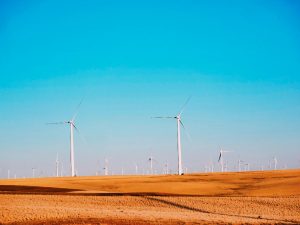 Since 2013, Energy Norway has been funding the Norwegian researchers studying test and control wind turbines in the 68-turbine, 152.4 MW Smola wind farm on a bird-rich island off the Norwegian coast of the same name. There, the scientists have been evaluating “contrast painting.” In a multi-year study, they have found that painting one of three blades black on a wind turbine reduced avian deaths by 71.9%. A single black blade helps the birds to perceive the rotor as an obstacle. Reportedly, kestrels, snipe, and golden plover were among the species to benefit most, but the biggest reduction was in deaths of white-tailed eagles.
Since 2013, Energy Norway has been funding the Norwegian researchers studying test and control wind turbines in the 68-turbine, 152.4 MW Smola wind farm on a bird-rich island off the Norwegian coast of the same name. There, the scientists have been evaluating “contrast painting.” In a multi-year study, they have found that painting one of three blades black on a wind turbine reduced avian deaths by 71.9%. A single black blade helps the birds to perceive the rotor as an obstacle. Reportedly, kestrels, snipe, and golden plover were among the species to benefit most, but the biggest reduction was in deaths of white-tailed eagles.
U.S. bird deaths are estimated to be 40,000 each year, thus there has been an effort make wind turbines more visible to ducks, grouse, and other low-flying birds. Apparently, birds have a narrow binocular frontal field, plus monocular capabilities, that’s good for tracking prey and enemies, but that doesn’t work well in an assumed open airspace. Eagles and soaring birds of prey are most susceptible to being hit and killed by the wind turbine blades.
Hydrogen Fuel Cell Power Plant
South Korea has a history with fuel cells, big ones. They are like batteries that keep on giving. In 2014, the Koreans energized a 59 MW fuel cell installation in Hwasung City. The record-sized plant consists of 21, 2.8 MW fuel cells supplied by FuelCell Energy of Danbury, Connecticut. The 5.1-acre facility is located in the Gyeonggi Province, along South Korea’s northwest coast. Natural gas is converted to hydrogen for the fuel cell’s electrochemical process.

Image Courtesy of FuelCellsWorks
Earlier this month, a 50 MW — the largest again — industrial hydrogen fuel cell power plant in the world was energized in South Korea. The $212 million Hanwha Energy plant uses the hydrogen by-product of its petrochemical manufacturing there to power the fuel cells at its Daesan Industrial Complex in Seosan. The petrochemical plant produces up to three tons of hydrogen per hour, which is then pumped to the new power plant via underground pipes. The only byproducts of the reactions that take place in each of 114 fuel cells are heat and water vapor. Thanks to the use of hydrogen, there are no greenhouse gas emissions or emissions of sulfur oxides and nitrous oxides. The fuel cells will generate up to 120,000 metric tons of water vapor per year, which will be condensed and pumped back to the petrochemical plant.
French and German EV Sales
Electric vehicles (EVs, “e-cars”) have been supported by governments around the world through regulatory actions, tax incentives, and financial incentives. China, which had 788,000 EVs on the road by the end of 2018 (versus 240,000 in the U.S.), has used purchase incentives that provide consumers with low-cost offers. EV drivers there are also excused from driving bans on certain days. The U.S. has used $7,500 tax bonuses; states kick in on top of that. Local governments allow EV access to HOV lanes. Norway’s e-car sales are not subject to the 25% Value Added Tax (VAT), and get discounts on ferry crossings.
According to Bloomberg New Energy Finance, “The EU is pushing toward decarbonizing transport, and the coronavirus crisis has allowed them to accelerate that.” Both France and Germany have been aggressively supporting their auto industries in the form of “rich” subsidies for electric vehicles. President Emmanuel Macron and Chancellor Angela Merkel were pressured to soften the blow to the badly hit sector, which has not come back to the levels seen in China and North America. In France, subsidies for EVs were increased to $8,282 (7,000 Euros), and $10,650 (9,000 Euros) in Germany.
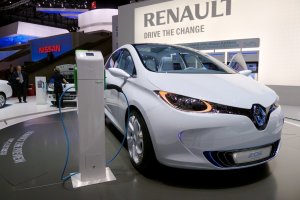 The two countries’ subsidies are among the most favorable in the world, and as such, shoppers have “swarmed to virtual showrooms.” AutoHaus Koenig, a dealership with 50 locations across Germany, advertised a lease on a Renault Zoe that is entirely covered by subsidies. Another car service leases Smart EQs – considered micro urban cars — for 9.9 Euros ($11.71) a month. A more “typical” EVs lease is for 39 Euros ($46) per month. In France, EV sales hit 9.5% in July; German EV sales hit 11%. It’s reportedly “a massive boost.” The Renault Zoe and the Peugeot e-208 are the top sellers in France; the Volkswagen e-Golf is the top seller of battery electric sales in Germany. Tesla comes in at number three in Germany, after Volkswagen and Renault.
The two countries’ subsidies are among the most favorable in the world, and as such, shoppers have “swarmed to virtual showrooms.” AutoHaus Koenig, a dealership with 50 locations across Germany, advertised a lease on a Renault Zoe that is entirely covered by subsidies. Another car service leases Smart EQs – considered micro urban cars — for 9.9 Euros ($11.71) a month. A more “typical” EVs lease is for 39 Euros ($46) per month. In France, EV sales hit 9.5% in July; German EV sales hit 11%. It’s reportedly “a massive boost.” The Renault Zoe and the Peugeot e-208 are the top sellers in France; the Volkswagen e-Golf is the top seller of battery electric sales in Germany. Tesla comes in at number three in Germany, after Volkswagen and Renault.
In related news, the City of Amsterdam will ban all non-electric cars by 2030. A recent offer, backed by $11.4 million fund to support EV purchases, was used up in eight days.
